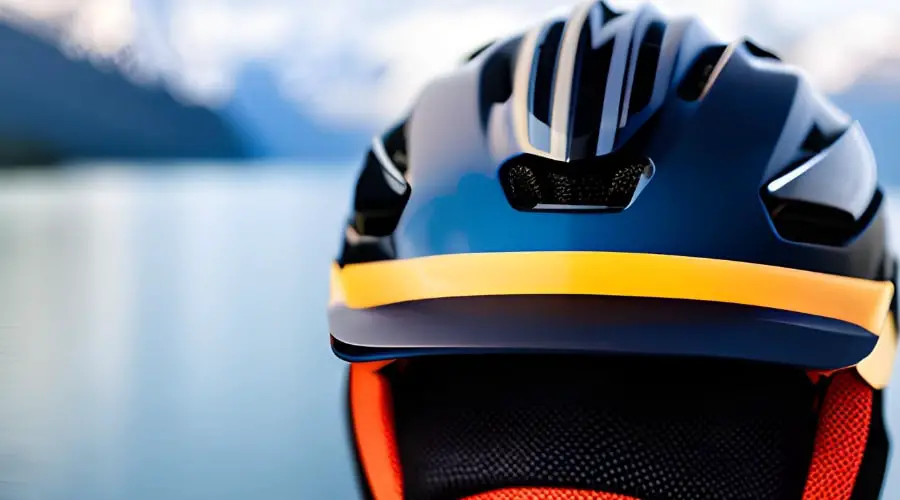Cycling is an enjoyable outdoor activity, but there are times when you might be looking for ways to improve your riding experience. One such upgrade is adding a visor to your bicycle helmet. In this article, we will explore why you might want to add a visor, the different types available, and how to choose and install the right one for you.

Why Add a Visor to Your Bicycle Helmet?
Sun Protection
A visor can provide much-needed sun protection during long rides, especially during the summer months. It shields your eyes and face from harmful UV rays, reducing the risk of sunburn and skin damage.
Improved Visibility
In addition to sun protection, a visor can also help improve your visibility by reducing glare and keeping rain, dust, or other debris out of your eyes. This ensures that you can maintain clear vision and focus on the road ahead.
Added Style
Finally, adding a visor to your helmet can give it a fresh, stylish look. With various colors and designs available, you can easily find a visor that matches your helmet and personal style.
Types of Visors for Bicycle Helmets
Clip-on Visors
Clip-on visors are the easiest to install and remove. They typically have small clips or brackets that attach directly to the helmet’s vents or shell. This makes them an excellent option if you want the flexibility to use your visor only when needed.
Strap-on Visors
Strap-on visors use adjustable straps or bands to secure the visor to your helmet. They offer more stability than clip-on visors and are ideal for riders who prefer a more secure fit.
Integrated Visors
Integrated visors come built into the helmet itself. If your helmet does not already have a built-in visor, this option might not be viable unless you’re willing to purchase a new helmet.
How to Choose the Right Visor for Your Helmet
Compatibility
First and foremost, make sure the visor you choose is compatible with your helmet. Check the manufacturer’s guidelines or consult with a local bike shop to ensure a proper fit.
Material
Visors are typically made from plastic or polycarbonate materials. Look for a durable, lightweight option that offers good UV protection and scratch resistance.
Size and Adjustability
Choose a visor that provides ample coverage for your face without obstructing your peripheral vision. Adjustable visors allow you to fine-tune the angle and position to suit your preferences and riding conditions.
Installing a Visor on Your Bicycle Helmet
Attaching a Clip-on Visor
- Line up the clips or brackets of the visor with the corresponding vents or slots on your helmet.
- Gently press the visor into place, making sure the clips or brackets securely engage with the helmet.
- Adjust the visor’s position to your desired angle.
Securing a Strap-on Visor
- Thread the straps or bands through the designated slots or channels on your helmet.
- Adjust the straps to achieve the desired fit and tension.
- Fasten any buckles or closures to secure the visor in place.
Integrating a Visor with Your Helmet
If your helmet has a built-in visor, refer to the manufacturer’s instructions for proper use and adjustment. Keep in mind that integrated visors may not be removable or adjustable to the same extent as clip-on or strap-on options.

Pros and Cons of Adding a Visor
Pros
- Enhanced sun protection
- Improved visibility in various conditions
- Added style and personalization
Cons
- Potential compatibility issues with some helmets
- Possible obstruction of peripheral vision if the visor is too large
- Additional weight and potential for wind resistance
FAQs:
Q: Can I add a visor to any bicycle helmet?
A: Not all helmets are compatible with visors. Check your helmet’s manufacturer guidelines or consult with a local bike shop to determine if you can add a visor to your specific helmet.
Q: Is it difficult to install a visor on my bicycle helmet?
A: The installation process depends on the type of visor you choose. Clip-on and strap-on visors are relatively easy to install, while integrated visors come built into the helmet itself.
Q: Can a visor obstruct my peripheral vision?
A: If the visor is too large, it may obstruct your peripheral vision. Choose a visor that provides ample coverage without limiting your field of view.
Q: Do I need a visor for my bicycle helmet?
A: While a visor is not a requirement, it can provide benefits such as sun protection, improved visibility, and added style. Consider your personal preferences and riding conditions to determine if a visor is right for you.
Q: Can I use a universal visor for my bicycle helmet?
A: Universal visors are designed to fit a wide range of helmets, but compatibility is not guaranteed. Always check the manufacturer’s guidelines or consult with a local bike shop to ensure a proper fit.
Conclusion
Adding a visor to your bicycle helmet can offer several benefits, including sun protection, improved visibility, and added style. Consider the type of visor that best suits your needs and preferences and ensure it is compatible with your helmet. By following our tips and guidelines, you can enhance your cycling experience and ride in comfort and style.
Helmetslab is a website that focuses on providing in-depth reviews and information about different types of helmets, including motorcycle helmets and others helmets. I am writing a post with proper research on the info that helps helmet users.

